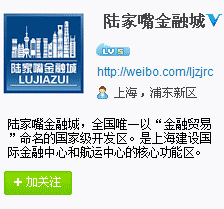City leads in house price hikes
|
|||||||||
( Shanghai.gov.cn )
Updated: 2013-12-19
Shanghai again led China’s house-price increases in November, according to official data released yesterday, as a rebound in demand offset government measures to curb the market.
The National Bureau of Statistics said prices for new residential properties, excluding government-funded affordable housing, rose year on year in all but one of the 70 major cities it tracks, unchanged from October and September.
In Shanghai, prices surged 21.9 percent from a year earlier, after gaining 21.4 percent in October. The city was followed by an increase of 21.1 percent in Beijing, 21.0 percent in Shenzhen and 20.9 percent in Guangzhou, all so-called tier-1 cities.
Wenzhou in east China’s Zhejiang Province continued to be the only city to register a decline.
Prices in top-tier cities will continue to rise at a rapid pace in the near future, according to a Chinese Academy of Social Sciences property report issued yesterday. It said strong end-user demand will drive out market speculation to bolster the market.
The recent rally in prices on China’s mainland was different from the rise driven by market speculation in 2009, the report said. Purchase restrictions in the big cities had suppressed speculation but, at the same time, spurred demand from home buyers, the academy report said.
JPMorgan economist Zhu Haibin said price rises were being driven by urbanization and strong growth in disposable income. While the demand has been artificially compressed by property tightening policies in recent years, the impact has been diminishing, he said, adding that the general easing in credit conditions since the second half of 2012 also supported the price rises.
The major cities, including Shanghai, have announced a slew of measures in the past months to rein in soaring home prices.
“But they mainly focus on tightening home purchase restrictions and mortgage lending,” Zhu wrote in a note. “These measures have been in place for several years and the marginal impact is limited. In addition, supply-side measures seem to lag.”
He said regional divergence, with tier-1 cities facing an under-supply situation due to tighter policies, had been remarkable in this round of price increases, different from the 2009-2010 housing boom.
However, the statistics bureau pointed out that the month-on-month increase has slowed.
On average, new home prices in the 70 cities rose 0.6 percent in November from October, compared with 0.7 percent in October, Liu Jianwei, a senior statistician at the bureau, said.
“This is mainly because those cities with surging home prices have intensified their tightening efforts, by raising the transaction cost of second homes and increasing the supply of affordable homes,” Liu said.
Meanwhile, rents expanded at a faster rate than the consumer price index, with the rental index up 4.4 percent in the first nine months, 1.3 percentage points higher than CPI growth in the same period, the academy said.
The rental index for has increased for 45 consecutive months as of September for the whole country, while the reading for Shanghai went up for a consecutive 39 months.






